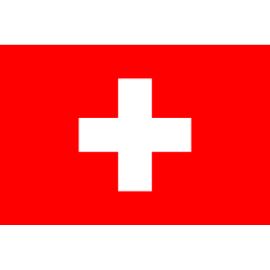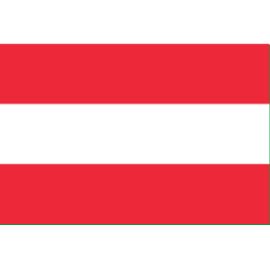匈牙利 相關
廣告上個月有 超過 100 萬 名用戶曾瀏覽 booking.com
全球上百萬間住宿供您選擇,多數客房免費取消
搜尋結果
匈牙利地处北半球温带区内,是大陆性气候、温带海洋性气候和地中海气候的交汇点,其中受大陆性气候的影响较大,属温带大陆性气候。匈牙利气候变化较大,不同地区之间温差也较大,年平均气温10.8 。夏天7月和8月的平均气温21.7 。
3 天前 · 匈牙利地處北半球溫帶區內,是大陸性氣候、溫帶海洋性氣候和地中海氣候的交匯點,其中受大陸性氣候的影響較大,屬溫帶大陸性氣候。匈牙利氣候變化較大,不同地區之間溫差也較大,年平均氣溫10.8 。夏天7月和8月的平均氣溫21.7 。
Hungary[a] is a landlocked country in Central Europe.[2] Spanning 93,030 square kilometres (35,920 sq mi) of the Carpathian Basin, it is bordered by Slovakia to the north, Ukraine to the northeast, Romania to the east and southeast, Serbia to the south, Croatia and Slovenia to the southwest, and Austria to the west. Hungary has a population of ...
- Overview
- Land
- Relief
Hungary, landlocked country of central Europe. The capital is Budapest.
At the end of World War I, defeated Hungary lost 71 percent of its territory as a result of the Treaty of Trianon (1920). Since then, grappling with the loss of more than two-thirds of their territory and people, Hungarians have looked to a past that was greater than the present as their collective psyche suffered from the so-called “Trianon Syndrome.” The syndrome was widespread prior to 1945; it was suppressed during Soviet domination (1945–90); and it reemerged during independence in 1990, when it took on a different form. The modern country appears to be split into two irreconcilable factions: those who are still concerned about Trianon and those who would like to forget it. This split is evident in most aspects of Hungarian political, social, and cultural life.
Hungarians, who know their country as Magyarország, “Land of Magyars,” are unique among the nations of Europe in that they speak a language that is not related to any other major European language. Linguistically surrounded by alien nations, Hungarians felt isolated through much of their history. This may be the reason why after Christianization they became attached to Latin, which became the language of culture, scholarship, and state administration—and even the language of the Hungarian nobility until 1844.
Cast adrift in a Slavic-Germanic sea, Hungarians are proud to have been the only people to establish a long-lasting state in the Carpathian Basin. Only after six centuries of independent statehood (896–1526) did Hungary become part of two other political entities: the Habsburg and Ottoman empires. But even then Hungarians retained much of their separate political identity and near-independence, which in 1867 made them a partner in Austria-Hungary (1867–1918). This was much more than the other nations of the Carpathian Basin were able to achieve before 1918.
Britannica Quiz
Geography Fun Facts
Landlocked and lying approximately between latitudes 45° and 49° N and longitudes 16° and 23° E, Hungary shares a border to the north with Slovakia, to the northeast with Ukraine, to the east with Romania, to the south with Serbia (specifically, the Vojvodina region) and Croatia, to the southwest with Slovenia, and to the west with Austria.
Dominating the relief are the great lowland expanses that make up the core of Hungary. The Little Alfold (Little Hungarian Plain, or Kisalföld) lies in the northwest, fringed to the west by the easternmost extension of the sub-Alps along the border with Austria and bounded to the north by the Danube. The Little Alfold is separated from the Great Alfold (Great Hungarian Plain, or Nagy Magyar Alföld) by a low mountain system extending across the country from southwest to northeast for a distance of 250 miles (400 km). This system, which forms the backbone of the country, is made up of Transdanubia (Dunántúl) and the Northern Mountains, separated by the Visegrád Gorge of the Danube. Transdanubia is dominated by the Bakony Mountains, with dolomite and limestone plateaus at elevations between 1,300 and 2,300 feet (400 and 700 metres) above sea level. Volcanic peaks comprise the Mátra Mountains in the north, reaching an elevation of 3,327 feet (1,014 metres) at Mount Kékes, Hungary’s highest peak. Regions of hills reaching elevations of 800 to 1,000 feet (250 to 300 metres) lie on either side of the mountain backbone, while to the south and west of Lake Balaton is an upland region of more-subdued loess-covered topography.
The Great Alfold covers most of central and southeastern Hungary. Like its northwestern counterpart, it is a basinlike structure filled with fluvial and windblown deposits. Four types of surface may be distinguished: floodplains, composed of river alluvium; alluvial fans, wedge-shaped features deposited at the breaks of slopes where rivers emerge from the mountain rim; alluvial fans overlain by sand dunes; and plains buried under loess, deposits of windblown material derived from the continental interior. These lowlands range in elevation from about 260 to 660 feet (80 to 200 metres) above sea level, with the lowest point at 256 feet (78 metres), on the southern edge of Szeged, along the Tisza River. In the northeast, bordering Slovakia, is Aggtelek National Park; characterized by karst terrain and featuring hundreds of caves, the area was designated a UNESCO World Heritage site in the late 20th century.
匈牙利 (匈牙利語: Magyarország )是位於歐洲的 內陸國家 。. 根據地理分區的不同定義,匈牙利被認為處在 中歐 和 東歐 。. 北鄰 斯洛伐克 ,東北鄰 烏克蘭 ,東和東南鄰 羅馬尼亞 ,南鄰 塞爾維亞 ,西南鄰 克羅地亞 ,西鄰 斯洛文尼亞 ,西北鄰 奧地利 ...
匈牙利(匈牙利語:)是位於歐洲的内陆国家。根據地理分區的不同定義,匈牙利被認為處在中歐和東歐。北鄰斯洛伐克,東北鄰烏克蘭,東和東南鄰羅馬尼亞,南鄰塞爾維亞,西南鄰克羅地亞,西鄰斯洛文尼亞,西北鄰奧地利。
匈牙利——奇迹之源,欢迎您来探索这个充满魅力的国家。无论是风景如画的首都布达佩斯,还是欧洲最大的淡水湖巴拉顿湖,抑或是享誉世界的匈牙利温泉浴场,都将为您带来难忘的体验。访问我们的网站,规划您的旅程吧。



















































